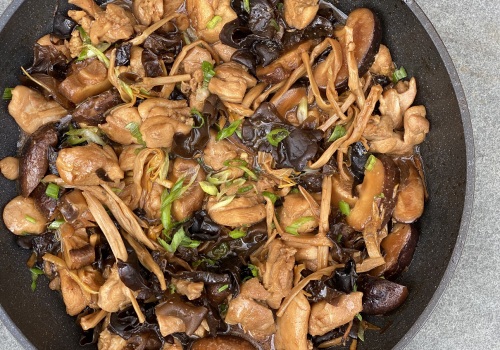Steaming is a staple cooking technique in Chinese cuisine, known for its ability to preserve the natural flavors of ingredients while enhancing them with the steam's gentle heat. When it comes to steaming, one ingredient that stands out for its unique flavor is dried scallops. These tiny delicacies are packed with umami and have been treasured in Chinese cooking for centuries. But to truly unlock the maximum flavor of dried scallops, steaming is the way to go.
In this article, we will dive into the art of steaming dried scallops and how it can elevate your Chinese dishes to new heights. So get ready to explore the world of steaming and discover the secrets to perfecting this traditional Chinese cooking technique. First and foremost, let's talk about the history and cultural significance of dried scallops in Chinese cuisine. These small but mighty mollusks have been used in Chinese cooking for centuries, prized for their concentrated flavor and unique texture. Today, they are commonly used in dishes such as soups, sauces, noodles, and stir fry.
But what is the best way to steam dried scallops to bring out their maximum flavor? The key is in the preparation and cooking method. Let's break it down step by step. The process of steaming dried scallops starts with choosing the right ingredients. You'll want to look for high-quality dried scallops that are plump, with a slightly translucent appearance. This indicates that they have been properly dried and will have a more intense flavor.
It's also important to soak the scallops in water for at least an hour before steaming, as this will help rehydrate them and prevent them from becoming tough and chewy. Once your scallops are soaked, it's time to prepare them for steaming. Gently rinse them with cold water to remove any impurities, then pat them dry with a paper towel. Next, place the scallops in a heat-safe dish or steamer basket and add some liquid to the bottom of the dish. This can be water, broth, or even wine for added flavor. The next step is crucial for unlocking maximum flavor from your dried scallops - seasoning.
Chinese cuisine often uses a combination of savory and sweet flavors, so a popular seasoning for steamed scallops is a mixture of soy sauce, sugar, and Shaoxing wine. You can also add other ingredients like ginger, garlic, or chili peppers for an extra kick of flavor. Now it's time to steam! Depending on the size of your scallops, they will take anywhere from 15-30 minutes to steam. You'll know they're done when they are plump and tender to the touch. Be careful not to overcook them, as this will result in a tough and rubbery texture. Once your scallops are steamed, you can serve them as is or incorporate them into a variety of dishes.
The most common way is to add them to soups or sauces, as the liquid from steaming will have a rich, seafood flavor. You can also add them to noodles or stir fry for added protein and flavor. In conclusion, steaming dried scallops is a simple yet essential technique in Chinese cooking. By following these steps, you can unlock the maximum flavor from these prized mollusks and elevate your dishes to new heights. So next time you're looking for a delicious dried scallop recipe, remember to give steaming a try!
Preparing Dried Scallops for Steaming
Before you begin steaming your dried scallops, it's important to properly prepare them.Start by rinsing them under cold water to remove any dirt or debris. Then, soak them in hot water for about 30 minutes. This will help rehydrate the scallops and soften their texture.
Steaming Time and Temperature
The key to perfectly steamed dried scallops is to cook them low and slow. This will help prevent them from becoming tough or rubbery.Steaming at 180°F for 20-30 minutes is ideal. You can also add some aromatics, such as ginger or scallions, to the steaming water for added flavor.
Using Steamed Dried Scallops in Your Dishes
Once your scallops are steamed to perfection, it's time to add them to your dishes! For soups and sauces, you can chop or shred the scallops and add them directly to the broth. For noodles and stir fry, you can slice them thinly and add them in towards the end of cooking. The result will be a burst of umami flavor that will elevate your dish to new heights.Choosing the Right Steaming Method
For the best flavor, it's important to choose the right steaming method for your dried scallops.Depending on the dish you are making, there are a few different ways to steam them. If you're making a soup or sauce, it's recommended to steam the scallops in a separate dish before adding them to your final dish. This allows the scallops to infuse their flavor into the broth. However, if you're making noodles or stir fry, you can steam the scallops directly in the dish.
This will still give your dish a delicious scallop flavor without having to steam them separately. When steaming, make sure to keep an eye on the scallops and remove them from heat as soon as they are cooked through. Overcooking can result in a tough and rubbery texture. So next time you're cooking with dried scallops, remember to choose the right steaming method for maximum flavor! Steaming dried scallops may seem like a simple task, but it's an essential technique in Chinese cooking that can make all the difference in flavor.
By properly preparing, choosing the right steaming method, and cooking at a low temperature, you'll unlock the full potential of these delicious sea gems. So go ahead and give it a try in your next Chinese dish – your taste buds will thank you!.







